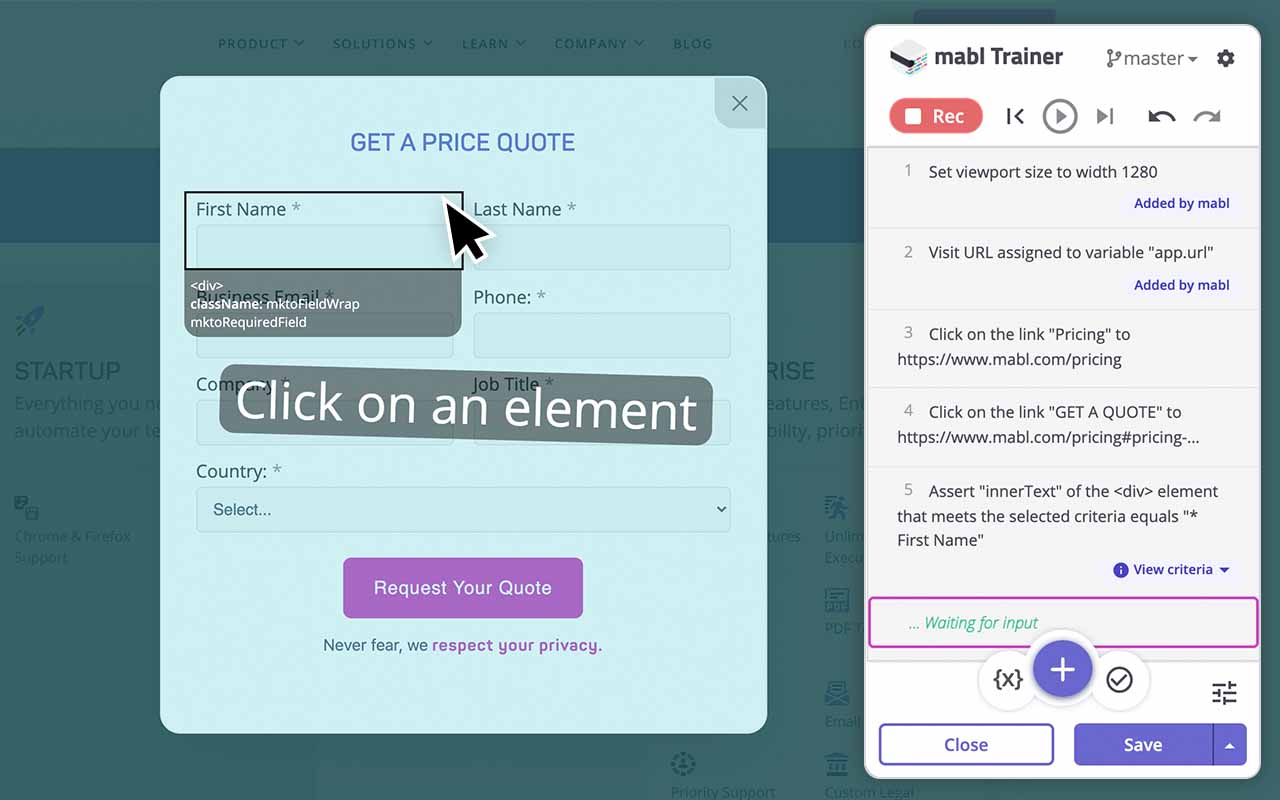Mabl Releases Beta for Low-Code UI Testing Automation Suite
UI testing firm mabl released a new low-code test automation platform for APIs and mobile web browsers to help teams speed and scale their test coverage.
To speed up UI testing, mabl has released a native desktop app with intelligent automation and low-coding in beta. The new mabl Trainer tests UIs for desktop browsers, mobile browsers, and APIs.
It is available as a Chrome extension to enable any team member to create scriptless tests rapidly, according to says mabl co-founder Dan Belcher.
In addition, mabl sports a low-code interface for test creation and maintenance – which will require up to 80% less effort and expertise than alternatives. The focus is to improve collaboration and significantly reduce the programming skills needed to write and maintain automated tests, Belcher added.
"With the addition of the desktop app, mabl is the simplest, most capable intelligent test automation solution on the market," said Belcher in a statement. "Quality professionals now have a seamless, low-code solution for their browser, API and mobile web testing needs, enabling them to automate even more routine tasks and focus their talent on higher-level quality initiatives."

The latest mabl capabilities include:
Desktop app: The desktop application - built with the open source Electron framework - provides users a low-code interface to create, execute, maintain, and analyze results of all their automated tests. Because mabl can now run in their browser, this eliminates the need for users to jump between multiple UIs. As a result, users can efficiently work on API and local web tests -- in the cloud or locally -- through a single unified experience.
Mobile web testing: New to the mabl platform, the desktop app includes support for mobile web testing. Users can validate responsiveness by creating and running tests across browsers and mobile device profiles in the same unified experience.
API testing: mabl's end-to-end API testing functionality enables users to quickly validate API workflows, right alongside browser-based workflows using a single unified platform. Beyond offering efficiencies, this also improves test coverage. Users can author and maintain API tests with mabl's low-code interface or import and export Postman collections to leverage existing automation investments.
The Imperative of Low-Code, Automated API Testing
In a recent mabl blog post, Bridget Hughes referenced a recent study that found nearly two-thirds (61%) of developers say they relied on APIs more in 2020 than in 2019; almost three-quarters (71%) say they'll use even more APIs in 2021.
Given this continuing explosion in APIs, she also pointed out how mabl fills the need to scale and bring intelligence to API testing.
To meet the enormous demand for API testing, QA professionals are leading the shift to quality engineering to establish best practices backed by effective test automation solutions to ensure that everyone, from developers to testers to product managers, have the means to easily and reliably test APIs. As testing scales, quality professionals will also need systems in place to manage and track tests to ensure an effective API testing strategy.
Starting with a known API platform like Postman creates a level of familiarity that makes it easier for both coding software testers and developers to begin experimenting with API test automation. With mabl, you can quickly convert your Postman collections into mabl API tests as well as the reverse, making it easy to begin automating API tests on schedule and on deployment.
As more team members begin working with API test automation, mabl's low-code user interface makes API testing accessible to non-coding team members, such as manual testers and product managers. The specialized knowledge of testers, who have deep expertise in UI testing as well as the "weird" user paths that customers stumble across, ensures that APIs provide a seamless experience in all possible scenarios.
As developers work on their UI, the mabl AI-powered auto-healing evolves tests as the UI evolves.
Under the covers, the mabl Trainer records user actions as they click through a web app and converts those actions into resilient, automated UI tests. During test creation and execution, mabl captures over 35 unique element attributes for both the target element and its parent.
This rich information history feeds into mabl's proprietary algorithms that locate the correct page element - even when it moves on the page (XPath), or some of its attributes change (e.g., id, class, innerText, etc.). Each time mabl auto-heals a test; it generates an insight for you to review.
For intelligent, flexible low-code UI testing, the mabl Trainer leverages these capabilities:
Creating Reusable Flows allows users to reuse a common sequence of steps across multiple tests. This eliminates many repetitive tasks.
Data-Driven Testing allows users to quickly increase test coverage by checking many scenarios with the same test without scripting or technical know-how.
JavaScript Snippets capabilities in mabl Trainer allow users with more complex scenarios (which may require programing) to write or add JavaScript snippets.
The mabl Trainer also lets users include advanced logic in tests such as assertions, variables, conditional steps, and loops.
As a result, software teams can avoid testing bottlenecks and harness test automation's power to achieve the full potential of DevOps. With mabl Trainer, users can also automate web app tests, API tests and improve collaboration among cross-functional team members, Belcher noted.
The mabl unified platform approach aims to make it easy for developers to create, execute and maintain reliable tests that result in faster delivery of high quality applications. The company lists Splunk and NCR, among other enterprise customers.






